This is Not A Flashdrive
Addressing the vape craze sweeping across the nation
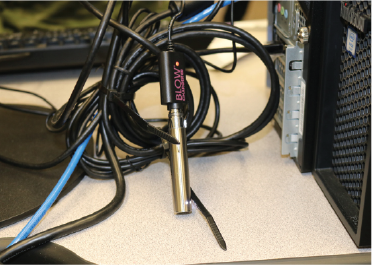
BVH student charges their vaping device using a school desktop computer. Photo by Lucia Rivera
Whether it’s in math, English or history, senior Rudy* has taken out his vaping device and used it during class.
“It makes you feel kind of lightheaded, kind of like an astronaut basically,” Rudy said.
Rudy uses an array of devices: juul, mod and a sourine drop. According to the Scientific American, all vape devices, including these three, consist of a liquid that contains nicotine, chemicals to vaporize the nicotine, additives and sometimes flavoring.
Similarly, senior Arnie* uses his vape mod everyday, as he walks to school in the mornings and back home in the afternoons. He began his vaping tendency around six months ago after he quit smoking marijuana, which he had used since seventh grade.
“[I vape] to keep myself calm. I used to smoke weed to calm my anxieties and now without it, I get high anxiety and so this helps calm me down,” Arnie said.
Arnie comes from a family of smokers with both his brother and father being addicted to cigarettes. He was first introduced to marijuana by his brother, who also smokes it and vapes.
“[My dad is] concerned that it would lead to me smoking cigarettes,” Arnie said. “But I’ve never liked cigarettes so I don’t have that fear in myself.”
Senior and close friend of Arnie, Isa* has experimented vaping marijuana concentrate, an oil extracted from the plant itself by exposing it to butane gas. Vaporizers containing the concentrate are referred to as “wax pens”.
“It’s not like I’m like tripping or anything like that,” Isa said. “I don’t use [wax pens] that often anymore, it’s more for when my insomnia is really bad or when I’m out with friends.”
Vaping is considered to be a fairly new phenomenon that has become very influential amongst high school communities. Bonita Vista High is not falling behind on seeing the effects of what people are calling a ‘vape nation.’
With the New York Times reporting on Nov. 13 that the popular vape company, Juul, has decided to halt their flavored product distribution in stores as well as their social media advertisements due to FDA pushback, vaping has recently become a smoking hot topic. This change was in efforts to decrease the number of teens vaping.
“If someone came up to me and offered me [a vape] right now, I would probably take a hit, ya feel?,” Rudy said. “It’s more of a casual thing right now.”
*The names of the three students mentioned throughout the piece have been changed in order to protect their anonymity. This has been done at the request of each individual, whose identities are known to the authors and whose security would be jeopardized by their disclosure.
An emerging ‘vape culture’
According to a recent national survey from the University of Michigan, 11 percent of high schoolers reported having vaped. BVH beats that statistic by nearly double, with 19 percent of students reporting the use of a vaping device through a poll conducted by the Crusader on Thursday, Nov. 8, in which nearly 1,000 students were polled.
These rates have led the federal Food and Drug Administration to consider the use of vaporizers an epidemic among teenagers.
“Students vaping at school and in classrooms is becoming a bigger problem,” Assistant Principal Chuck Quillin said. “If we walked through the bathrooms on a regular basis, we would probably find kids vaping every day. It wouldn’t surprise me if that was the case.”
BVH students use a wide variety of vape devices, from juul to vape pens. There are also the increasingly popular wax cartridges that allow users to inhale tetrahydrocannabinol oil (concentrated marijuana), also known as THC oil, rather than nicotine, which has statistically become equally as popular as traditional vaping products at BVH. 14 percent of students use each product.
“There’s different ways [to extract THC oil] but the most common one is called a butane hash oil extraction lab. Basically, they take pieces of marijuana, any type, the leafs, the buds, or anything from the marijuana plant. Then they put it in a long tube and they filter butane gas through it. Then at the end, the stuff that drips out is a concentrated form of the marijuana plant,” Special Agent with the Drug Enforcement Administration Kameron Korte said.
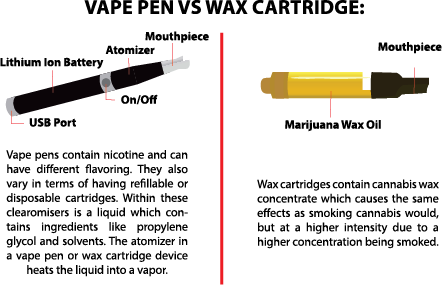
“I’ve heard of the term vape. That’s been around for a few years now,” Quillin said. “But there’s a variety of [other] names and I’m just learning this myself.”
Yale researchers concluded earlier this year that the hike in vaping among teenagers has resulted in a decline in regular cigarette smoking among teens. At BVH, only five percent of students reported smoking cigarettes at least once.
While only a minority of BVH students vape, over 50 percent of students claimed to know someone on campus who vapes regularly, bringing ‘vape culture’ into the lives of the majority of the student population.
“Half of my friends don’t vape, but they don’t care that I do,” Isa said. “It’s all about respecting each other. If they don’t like it, I’m not going to do it in front of them.”
With the vape industry booming, the federal government is becoming involved in curbing vape culture, both through policy action and by reaching students directly.
“We, [as Special Agents with the Drug Enforcement Administration,] go to elementary schools, middle schools and high schools,” Korte said. “We talk about how your choice and the decisions you make will impact your future; how one bad decision can ruin your life.”
Still, students at BVH and across the country find access to vape products through dealers and black markets. In fact, multiple advocacy groups such as the “This is Not a Flashdrive” campaign, are concerned that the vaping industry is targeting teens specifically.
“Obtaining vapes and marijuana is probably getting easier and easier for kids,” Quillin said. “They’re out there.”
In the state of California, the use and purchase of vaporizers are illegal for individuals under the age of 21.
However, Rudy explained that at a store which he identified as “The Smoke Shop,” he purchases vape products despite the transaction’s illegality, even without the use of a fake ID.
“It’s pretty common at that place,” Rudy said.
When questioned if the retailer asked or was aware that he was underage, Rudy hesitated, only mentioning that he was never asked for an identification to prove his age.
Given vaping’s popularity among teens, multiple groups have launched efforts to limit the public’s access to vape devices, while others aim to ban them altogether.
“The genie’s out of the box,” Quillin said. “How can we put him back in?”
BVH administration responds to the vape craze
As the epidemic continues to spread throughout BVH, the school administration is taking measures to prevent the usage of vapes on campus. According to Quillin, the school confiscates at least one vape product every week. However, many students such as Rudy are able to get away with using vape devices even during classes.
“[Students] don’t get caught often because [vaping is sometimes] smokeless, odorless and easy to hide,” Korte said. “Different vape devices are really tiny. So if a kid is trying to conceal that, it’s a lot easier.”
One of the three vape devices Rudy uses is called a “sourine drop”, shaped like a droplet of water and small enough to fit in the palm of a hand. According to Rudy, “even when you’re clenching your hand, it doesn’t look like there’s anything in there.”
“Teachers didn’t see it. They don’t really look for it,” Rudy said explaining why he was never caught using his vape in classes.
While the incoming technology of vapes have allowed them to become more portable, students still run the risks of getting caught in many different ways. Quillin stated that the school administration receives reports from students and staff members about suspicions regarding the usage of vapes.
“We have the right to search, all we need is a reasonable suspicion. We don’t need protocols,” Quillin said. “But we don’t go out and search every kid, there’s got to be a little bit more to it than that. There’s got to be a pretty good reason.”
Along with tips submitted by students and staff, the school nurse may also check students who are “under the influence” and Quillin states that in those occasions it’s a “dead giveaway.”
“Most kids cannot hide it. Kids give themselves away so easy,” Quillin said. “When you got a group of kids in the bathroom, [you know] something’s going down. And then you can see the smoke or the residue of the vape. Usually, that’s how they get intercepted.”
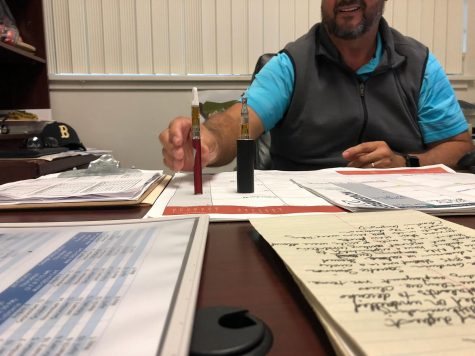
Once a student is caught using a vape product, their vape device is confiscated and they are sent to administration. Their parents are contacted and notified about their child’s usage of vapes.
“It’s a suspendable offense. Typically we investigate what the role of the person was. Did he bring it or was he just exposed to it and smoked it with somebody? But in any event, you cannot be under the influence at school,” Quillin said.
On average, a student found vaping in school receives a suspension of around two to three days. It is also recommended to the parents that they take their student to do a drug diversion program through South Bay Community Services or the Chula Vista Police Department.
“It’s funny and I’m surprised at how many kids say it’s their first time [when they are caught]. Now, do I believe that? Probably not. But that’s a line I hear a lot,” Quillin said. “Maybe that’s a common line people use as an excuse.”
Students of all grades have been caught using vape products by the BVH administration and it’s assumed by Quillin that the “availability of obtaining these types of vapes is probably getting easier and easier for kids.” Even when students are caught, it is only a recommendation that parents have their child do a drug diversion program, it is not “forced.”
“I think [the problem of students vaping is] only going to get worse. I don’t see it getting any better,” Quillin said.
Physical and mental health implications
In room 206, health teacher Shannon Bruce addresses the health repercussions of nicotine products, including vaporizers specifically, per course curriculum requirements.
“I have students who come talk to me about how they don’t do things that can be harmful because they’ve seen the results in class,” Bruce said. “I think seeing pictures helps people really visualize the effects. Not being able to breathe isn’t all that fun.”
One of the main medical implications of vaping addressed in Health class is bronchiolitis obliterans, also nicknamed as popcorn lung. According to Bruce, this condition can be caused by the chemicals inhaled from the flavored liquid inside nicotine-based vape products.
“It originated from the workers that worked with microwavable popcorn bags. The chemical that they lined the bags with was causing scarring lung tissue, so they just nicknamed it popcorn lung,” Bruce said.
Bronchiolitis obliterans is occurs when scar tissue forms in the alveolus, the tiny air sacs in your lungs. These air sacs are in charge of gas exchange and transfer oxygen into your bloodstream.
“When you have scarring of those little air sacs, you can’t get the oxygen in [your bloodstream]. It’s really dangerous,” Bruce said.
Despite this in-class discussion, Bruce explained that several students still choose to vape, even when they, “know the repercussions.”
“Yeah, I took health. Some of the chemicals that are in the flavoring cause popcorn lung, but that’s also with a high level [of nicotine],” Arnie said. “I’ll probably end up dying of old age first anyways.”
Arnie reported using vape products with fruity flavors such as apple, raspberry and cherry.
“Sometimes kids don’t see the future,” Bruce said. “They’re under the impression that it’s safe. It’s not safe. It can be safer [than cigarettes] if it doesn’t have flavoring, but it’s still not safe.”
While the nicotine-filled juice inside regular vape pens contains flavoring, the marijuana concentrate form of vaping typically does not. Instead the impacts of marijuana concentrate form of vaping such as wax pens are more similar to smoking marijuana directly.
“What’s bad about [wax pens], is that they’re 40 to 80 percent more concentrated than just smoking regular marijuana,” Korte said. “It’s so concentrated that the [high] user might get is more psychologically and physically intense. The normal effects that one might get from marijuana are even greater.”
Although research on vapes is limited due to their new and ongoing development, Yale researchers recently concluded that nicotine vaping products can, “interfere with attention and memory processing,” and that “the adolescent brain is extremely sensitive to the effects of nicotine.”
“[Vapes] are not the same as cigarettes because you choose the percentage of nicotine that you want,” Isa said. “I mean, you can change the percentage of nicotine to be [as much as] a whole pack of cigarettes or you can put enough to only equal one.”
While all sources agreed that vape and wax cartridge usage can have negative effects on physical health, multiple student users claimed that the mental health benefits motivate them to continue using vape products.
“I have problems with anxiety, depression and insomnia, so it helps with that,” Isa said. “[My parents] prefer [me vaping] over medication. They’re like: ‘Okay, it helps you and it’s not having any negative effects. It’s not changing your personality. Your grades aren’t going down or anything.’”
A study from University of California at San Diego found that those with a history of mental health issues are three times as likely to pick up vaping.
However, the mental effects of vaping and wax cartridges are temporary, and thus psychologists are wary to recommend them to patients, according to the Minds Journal. Once the high from marijuana or ‘buzz’ from nicotine wares off, the user is back to their original state of mind, in many cases bringing them into a cycle of reuse in order to continuously return to a mental state free of anxiety or depression.
Addiction
While most students in the Crusader’s poll who reported vaping only did so on a single occasion, 24 percent of users claimed to vape at least once a week and 11 percent at least once a day.
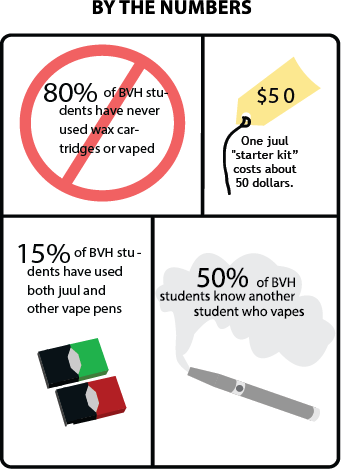
For Isa, however, vaping occurs whenever she, “feels like it.”
“Sometimes, I’ll do it for week straight, but then I won’t for like, two weeks,” Isa said. “I don’t know. It’s not like something I’m actually addicted to it or anything. I could probably like not do it for like a year.”
When asked if she planned on quitting anytime soon, Isa responded: “No, not really.”
“Students vape because they’re addicted to nicotine,” Bruce said. “We’re seeing students—maybe not in our school but in our country—going to rehabilitation centers for nicotine use. Vapes and juuls can contain up to ten times more nicotine than a cigarette.”
Aware of the dangers, Rudy recently decided to quit vaping, at least for the foreseeable future.
“I don’t do it anymore. But I’m going to start up again later. I know how I am,” Rudy said, laughing.
According to Korte, research on vaporizer addiction is limited. Still, multiple studies conclude that nicotine and marijuana are highly addictive substances.
“It’s one of those things where if you don’t get on top of it, it can be destructive,” Quillin said. “And I’ve seen it—I’ve seen it in kids.”
Ultimately, it’s up to individual students, like Rudy, Arnie and Isa, to determine how closely they interact with the increasingly present ‘vape culture.’
“If you have the education and someone teaches you the dangers of it, hopefully you’ll make the right choice,” Korte said. “I can give you all the tools you need to do something, but it’s up to you.”

I’m a senior and third-year member of the Crusader staff. I deeply value journalism’s power to share stories about the diverse human experiences that...

As a current senior at Bonita Vista High, this is my second year as a journalist. I have covered numerous articles ranging from district issues and human...

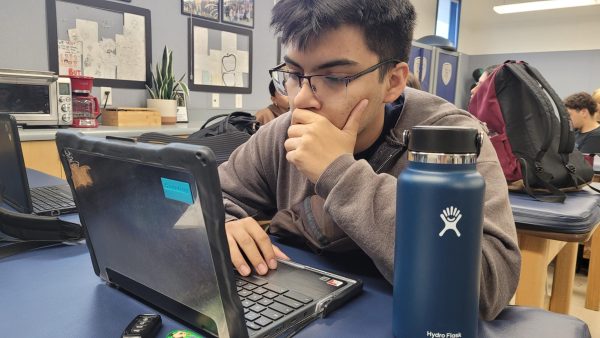




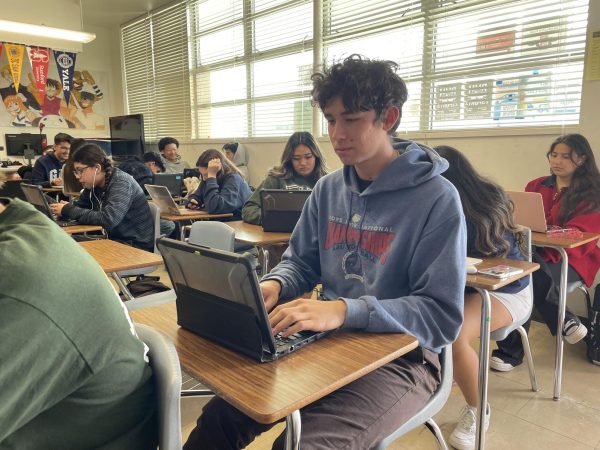

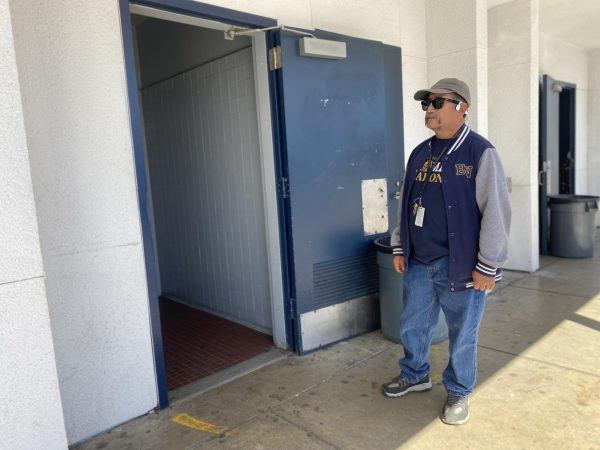


Parvin Kaidi • Nov 28, 2018 at 10:31 am
Well Done! Great article!
Amber • Nov 27, 2018 at 9:55 am
This was very well written. Thank you for including this very important topic in your writing. It is so very relevant to students and staff. We’ll done!
Lindsay • Nov 26, 2018 at 10:49 am
I am very proud and impressed at the level of detail and the high quality of the writing in this article. It is clear you did extensive research both with professionals and your peers on their interactions with this product and the culture around it. Keep up the great work! You all make me proud to be a Baron!
Victoria Gonzalez Rivera • Nov 26, 2018 at 10:48 am
Very informative piece. Thank you!
Carmel • Nov 26, 2018 at 8:51 am
This is a very timely and insightful piece. Kudos to you!
Paulina • Nov 26, 2018 at 8:17 am
Awesome job!!!